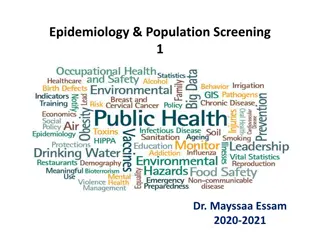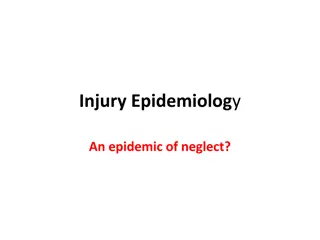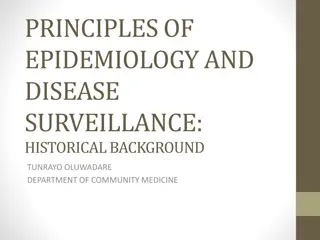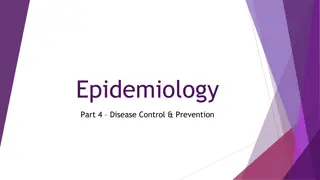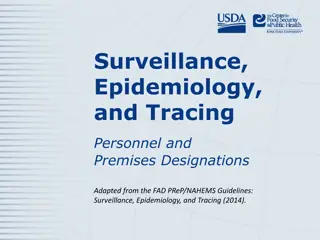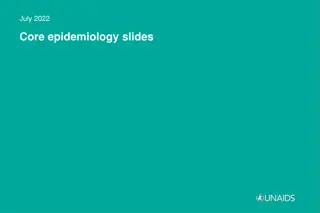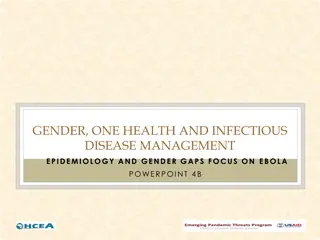Epidemiology and Epidemics
Epidemiology is the study of health problem distribution in populations, focusing on disease determinants to control their impact. The Epidemiologic Triangle explores the interaction of agent, host, and environment in disease transmission. Epidemics and pandemics exemplify disease outbreaks exceeding expectations, with notable historical events such as the Influenza pandemic of 1918. Specific diseases like Ebola and Zika have distinct symptoms, transmission routes, and impacts on health. Nipah virus, transmitted through direct contact, demonstrates severe symptoms and long-term effects, leading to outbreaks in Bangladesh.
Download Presentation

Please find below an Image/Link to download the presentation.
The content on the website is provided AS IS for your information and personal use only. It may not be sold, licensed, or shared on other websites without obtaining consent from the author.If you encounter any issues during the download, it is possible that the publisher has removed the file from their server.
You are allowed to download the files provided on this website for personal or commercial use, subject to the condition that they are used lawfully. All files are the property of their respective owners.
The content on the website is provided AS IS for your information and personal use only. It may not be sold, licensed, or shared on other websites without obtaining consent from the author.
E N D
Presentation Transcript
What is epidemiology? study of the distribution and determinants of health problems populations applying that information to control health problems who diseases affect, what factors are involved, and how can it be contained
Epidemiologic Triangle Agent (What) microbe that causes the disease Host (Who) organism harboring the disease Environment (Where) external factors which allow or cause disease transmission
Epidemics and Pandemics epidemic more cases of a particular disease than expected in a given area/population example: Polio 1950s 58,000+ cases and 3,145 deaths pandemic a widespread epidemic across a large region examples: Influenza 1918 infected about 1/3 of the world population, about 100 million deaths worldwide HIV/AIDS Black Death 1347 killed about 1/3 of European population
Ebola hemorrhagic fever symptoms include: fever severe headache muscle pain/weakness fatigue vomiting and stomach pain unexplained hemorrhage incubation period is between 2-21 days (avg. 8-10) recovery depends on care people who recover develop antibodies that can last for 10 years
Zika Spreads mostly through mosquitos Symptoms include: Fever Rash Joint pain Red eyes Headache Muscle pain Many people don t get sick enough to go to the doctor some are asymptomatic Dangerous if infected during pregnancy Linked to microcephaly and other severe brain defects in infants
Nipah Transmitted through direct contact with pigs, bats, or infected people Symptoms include: Fever Headache Drowsiness Disorientation and confusion Can progress to a coma within 24-48 hours Long term effects include persistent convulsions and personality changes 1999 outbreak nearly 300 infected with over 100 deaths Annual outbreaks in Bangladesh are common





